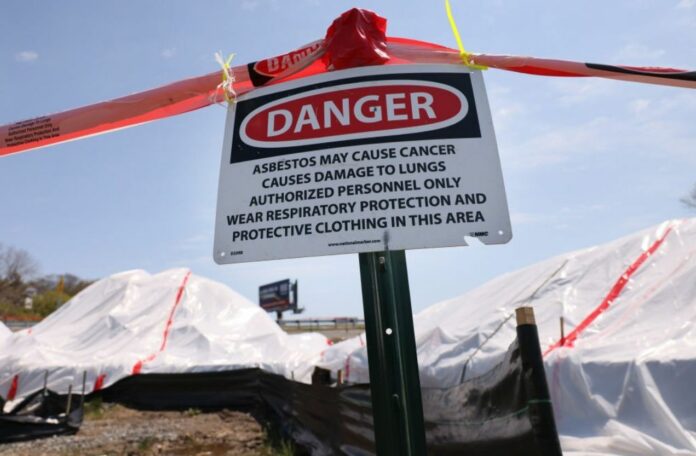Asbestos materials were once extensively utilized in various applications such as homes, buildings, automobile brakes, and other construction materials due to their strength, heat, and fire resistance, and low electrical conductivity. Unfortunately, it has been well-established that inhaling small fiber particles of asbestos can lead to highly carcinogenic health effects.
In a groundbreaking study conducted by researchers from the University of Pennsylvania, it has been discovered for the first time that extremophilic bacteria found in high-temperature marine environments have the potential to mitigate the toxicity of asbestos.
The findings of this research have been published in Applied and Environmental Microbiology.
A significant portion of their research has been dedicated to studying the thermophilic bacterium Deferrisoma palaeochoriense and its ability to eliminate iron from asbestos minerals using anaerobic respiration of that iron.
“Iron has been identified as a major component driving the toxicity of asbestos minerals,” remarks Ileana Pérez-Rodríguez, Ph.D., Assistant Professor of Earth and Environmental Science at the University of Pennsylvania, “and its removal from asbestos minerals has been shown to decrease their toxic properties.”
According to Pérez-Rodríguez, recent findings have demonstrated that D. palaeochoriense can facilitate the transfer of electrical charge within the iron present in asbestos, without altering its mineral structure.
This suggests that the bacterium could potentially enhance the electrical conductivity of asbestos. Furthermore, this observation raises the possibility of using the bacterium to mitigate asbestos toxicity by removing iron. Alternatively, the newfound electrical conductivity properties could allow for the repurposing of treated asbestos.
In addition to iron, the fibrous silicate structures of asbestos are known to be carcinogenic. Researchers explored the capability of the thermophilic bacterium Thermovibrio ammonificans to eliminate silicon and magnesium from asbestos minerals through a process called biosilicification, which involves the accumulation of silicon in the bacterium’s biomass.
Pérez-Rodríguez stated that T. ammonificans successfully accumulated silicon in its biomass when exposed to “serpentine” asbestos, characterized by curly fibers. However, this accumulation did not occur when the bacterium grew in the presence of “amphibole” asbestos, which has straight fibers.
This discrepancy, combined with the diverse elements released during microbe-mineral interactions with different types of asbestos, emphasizes the challenge of developing a universal approach to asbestos treatments.
Each asbestos mineral possesses distinct chemical compositions and crystal structures, necessitating tailored solutions for effective treatment.
According to Pérez-Rodríguez, the conducted experiments demonstrated more effective removal of iron, silicon, and/or magnesium for detoxifying asbestos compared to other biologically mediated methods, such as through fungi.
This finding suggests a superior approach for the detoxification of asbestos. However, additional analysis is necessary to refine asbestos treatments and determine the most practical methods for detoxification and/or reuse of asbestos as secondary raw materials.
Image Credit: Jessica Rinaldi/The Boston Globe via Getty Images
